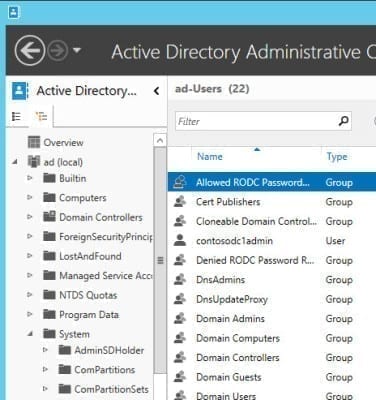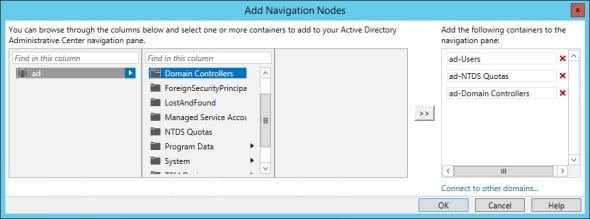3 Tips for Working with the Active Directory Administrative Center (ADAC)
The Active Directory Administrative Center is more than just a hand-holding tool for newcomers learning Active Directory. As I outlined in another Petri post, “Why Learn the Active Directory Administrative Center,” managing large distributed forests can be difficult using the management consoles provided by Microsoft, so a new tool was required that could be used by beginners and seasoned professionals alike. In this easy Ask the Admin, I’ll show you three ways to more efficiently work with the Active Directory Administrative Center (ADAC) in Window Server 2012.
ADAC: Pin OUs and Containers in the Navigation Pane
The Active Directory Users and Computers (ADUC) management console shows AD only in a hierarchical view, and is fine if you don’t have deeply nested OUs and just one domain. As AD grows, having to dig down each time you need to find an object can become tiresome. ADAC automatically pins recently accessed Organizational Units (OUs) and containers to the navigation pane, enabling administrators to quickly start working where they left off.
To manually pin an OU or container to ADAC’s navigation pane, log on to a Windows Server 2012 domain controller (DC) as a domain administrator or user that has read access to Active Directory.
- Open Server Manager using the icon on the desktop taskbar.
- In Server Manager, select Active Directory Administrative Center in the Tools menu.
- In the Active Directory Administrative Center, select Add Navigation Nodes from the Manage menu in the top-right corner.
- In the Add Navigation Nodes dialog, select the OU or container that you want to add to the navigation pane and click the Add arrow. Once finished, click OK.
Now go back to ADAC and you will see the OUs and containers you added in the previous steps listed in the left pane.
View Multiple Domains
If your organization has more than one domain, you’ll be glad to hear that ADAC can show multiple domains simultaneously – unlike ADUC, which requires a separate console window for each domain that you want to manage.
To add a domain to ADAC’s navigation pane, go to Add Navigation Nodes as described in the previous steps and add any domains that you want listed in the navigation pane.
Browse AD the Old-Fashioned Way
If you prefer to browse the AD hierarchy as it is presented in the Active Directory Users and Computers tool, you can still do that in ADAC. Just click the hierarchy icon at the top of the navigation pane.





